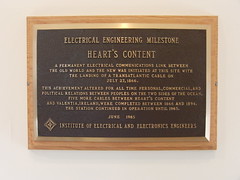Hewlett-Packard researchers have proposed a fundamental rethinking of the modern computer for the coming era of nanoelectronics — a marriage of memory and computing power that could drastically limit the energy used by computers.
Today the microprocessor is in the center of the computing universe, and information is moved, at heavy energy cost, first to be used in computation and then stored. The new approach would be to marry processing to memory to cut down transportation of data and reduce energy use.
The semiconductor industry has long warned about a set of impending bottlenecks described as “the wall,” a point in time where more than five decades of progress in continuously shrinking the size of transistors used in computation will end. If progress stops it will not only slow the rate of consumer electronics innovation, but also end the exponential increase in the speed of the world’s most powerful supercomputers — 1,000 times faster each decade.
However, in an article published in IEEE Computer in January, Parthasarathy Ranganathan, a Hewlett-Packard electrical engineer, offers a radical alternative to today’s computer designs that would permit new designs for consumer electronics products as well as the next generation of supercomputers, known as exascale processors.
Today, computers constantly shuttle data back and forth among faster and slower memories. The systems keep frequently used data close to the processor and then move it to slower and more permanent storage when it is no longer needed for the ongoing calculations.
In this approach, the microprocessor is in the center of the computing universe, but in terms of energy costs, moving the information, first to be computed upon and then stored, dwarfs the energy used in the actual computing operation.
Moreover, the problem is rapidly worsening because the amount of data consumed by computers is growing even more quickly than the increase in computer performance.
“What’s going to be the killer app 10 years from now?” asked Dr. Ranganathan. “It’s fairly clear it’s going to be about data; that’s not rocket science. In the future every piece of storage on the planet will come with a built-in computer.”
Related articles
- Intel’s new Itanium is the Moby Dick of microprocessors (venturebeat.com)
- SeaMicro’s green computers made in Silicon Valley (sfgate.com)
- Creating Adaptable Computers (usnews.com)









